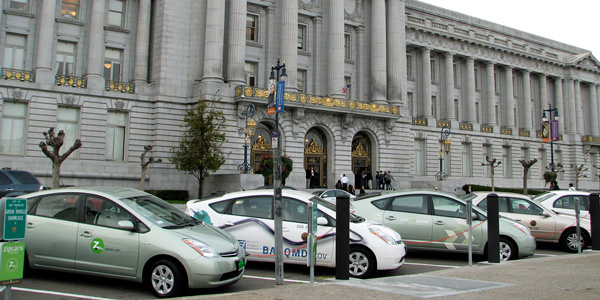By Jason Fordney
California and eight other states rolled out a plan Wednesday pushing for wider adoption of policies that would accelerate the use of zero-emission vehicles (ZEVs) and meet greenhouse gas-reduction goals.
The “Multi-State ZEV Action Plan” calls for increased adoption of ZEV purchase and infrastructure incentives, more consumer outreach and heavier emphasis on the technology at state utility commissions. The plan, which covers 2018 to 2021, comes out of a 2013 agreement signed by California, Connecticut, Maryland, Massachusetts, New York, Oregon, Rhode Island and Vermont, which represent almost 30% of new car sales in the U.S., they said.
“Transportation electrification is essential to deliver the deep reductions in emissions that are needed to meet state climate goals. The state ZEV programs, which require automakers to deliver increasing numbers of zero-emission vehicles between now and 2025, are a key strategy in state climate plans,” the plan says.
It includes 80 recommendations for states, automakers, dealers, utilities and charging companies in order to bolster plug-in hybrid, battery electric and hydrogen fuel cell vehicles. The new effort follows a similar 2014 multistate plan the coalition said has increased ZEV incentive programs, new education campaigns and new commission initiatives in their states.
With hundreds of millions of fossil fuel-powered vehicles on American roadways, the report acknowledges that ZEV adoption so far has been focused mainly on “enthusiastic early adopters” and that much wider deployment, including commercial/utility vehicle fleets, will be needed to make an impact on climate change.
The report says that automakers are now required to deliver fully electric vehicles to meet specific sales goals in Oregon and other coalition states in the Northeast. More than $500 million in charging infrastructure is planned for the Northeast corridor, and California is now focusing on bolstering its infrastructure through $738 million in utility incentives. (See California to Require Sharp EV Charger Growth by 2025.)
Total U.S. ZEV sales grew from 200,000 to 750,000 since 2013, as battery costs declined and the number of available models and options increased. The states say light-duty vehicle adoption and public-private partnerships are important tools in wider adoption.
California Attorney General Xavier Becerra and others have challenged in court EPA’s April 4 decision to roll back previous GHG emission standards related to light-duty vehicles, which the agency said “may be too stringent.”
Several governors referenced the EPA decision when announcing the new action plan, with Connecticut Gov. Dannel P. Malloy saying: “When it comes to taking aggressive steps to fend off the most damaging impacts of climate change, the Trump administration not only continues to bury its head in the sand but is actively working to dismantle common sense efforts to reduce carbon pollution.”
Light-duty vehicles, classified as those with gross vehicle weight of 10,000 pounds or less, are the largest contributor to GHGs in the nine states (24% of emissions), followed by the electricity sector (19%) and industry (17%), with the remainder coming from heavy-duty vehicles, agriculture, the residential sector, other transportation and the commercial sector.




